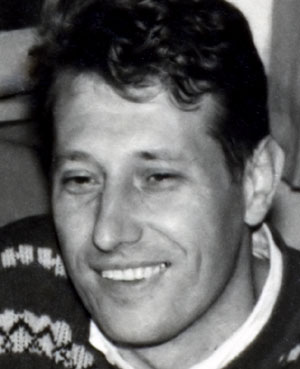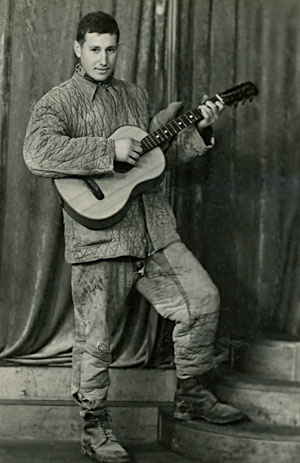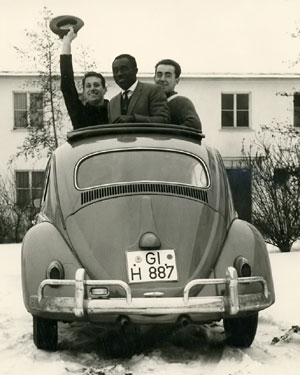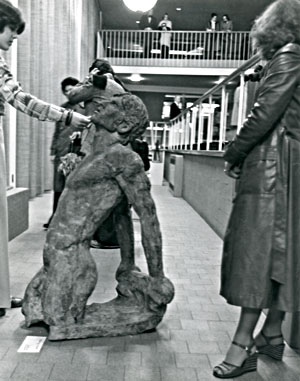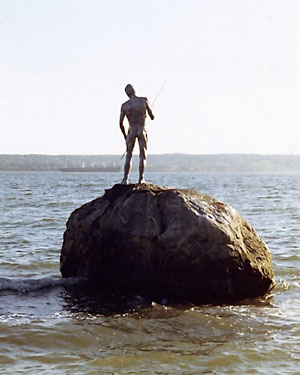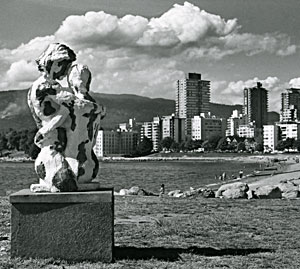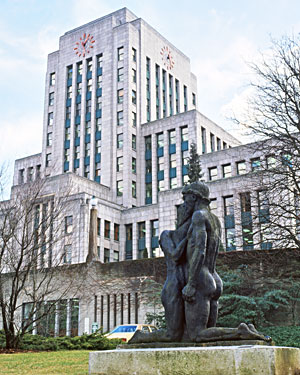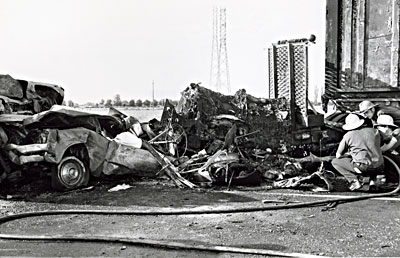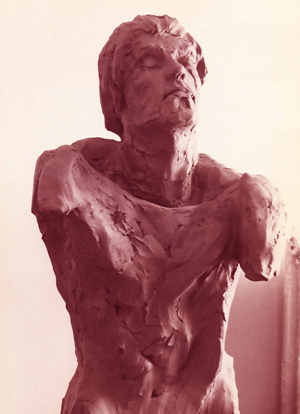
November 15, 1932 Hetzeldorf, Rumania
August 5, 1977 Vancouver, Canada Gerhard Juchum was born of German parents on November 15, 1932 in Hetzeldorf, Rumania. He was raised on his grandfather's estate which was in the Tarnava region, an area well-known for its wine production. Early in his life his parents became aware of his artistic and musical gifts. Gerhard expressed his highly creative imagination through his drawings and paintings. The possibilities for fostering such talent were limited in Tarnava, so his parents placed him in a German elementary school in Hetzeldorf. Here he excelled. He strove for a higher education. Because he was German the Rumanian authorities refused to allow him to attend secondary school. But Gerhard never let himself be discouraged. He looked for, and found, Rumanian friends who recognized and appreciated his sincerity and worth. They made it possible for him to enter high school in Medias, near Hetzeldorf. Later he was allowed to enter university to become a veterinarian. This was satisfactory for a time, but gradually he realized how restricted he was and his yearning for freedom grew. His wish was to be creative in the arts.
His yearning for freedom heightened immeasurably. His mother had left Rumania for West Germany during the Second World War. He tried by legal means to join her there, but these attempts were in vain. After nine years of waiting for his emigration papers he was willing to take advantage of any opportunity. He had a friend who worked in a government office. She slipped Gerhard's emigration papers amongst others her employer was to sign. The next day Gerhard boarded a train for West Germany. During his first weeks of freedom in Germany he plunged himself into his art. He sketched, painted, and sculpted as if he wanted to make up in a week what he had missed in all his previous years. Slowly Gerhard realized that he needed money for daily living. To practise veterinary medicine in Germany, however, he was required to repeat his studies. Not only did he have to repeat all those years at university, but it was also required that he repeat the last year of high school. He started all over again. Within a year he completed his grade twelve and registered at the Justus Liebig University in Giessen to study veterinary medicine. At the same time he studied composition, content and forms of expression in the Faculty of Fine Arts at the university in Wurzburg am Main, as well as studies of art criticism, art history, and sculpture in Wurzburg, Heidelberg, Frankfurt and Giessen.
He graduated from the Justus Liebig University in 1967, again receiving a veterinary degree. He applied for the position of developmental assistance worker in Central America. Again the bureaucratic procedures were lengthy so he chose to apply for an immigration visa to Canada as well. His Canadian visa came through first. Gerhard Juchum came to Vancouver, British Columbia in October, 1968. Here, while undertaking studies in philosophy, sociology and art, he prepared for yet another veterinarian examination to obtain Canadian accreditation. After qualifying for his license, he worked as a veterinarian in Vancouver for the federal government.
Gerhard was entirely self-sufficient. Although he repeatedly applied, he never received any grants or subsidies. He earned his living through his work for the government, and after-hours spent most of his money, time and creative forces on sculpting. Within four years he created seventy major works. He enriched the art world with about fifteen new sculptures every year.
As an ardent protagonist of public involvement in art, he found some unusual ways of bringing works of art to public attention. His execution and erection of The Spearfisher at a public beach was met with general enthusiasm by park visitors, received front page coverage in the local press and resulted in several guest appearances by Gerhard on television. Vancouver Parks Board officials, however, did not appreciate the arrival of the sculpture on the beach without the documented consent of Council. The Spearfisher however, did impress the Council of Port Hardy on Vancouver Island, and so was shipped to them upon their request.
In 1973 the sculptor again decided to place another sculpture, The Lovers II, in a public place. Two days later the statue was returned by the Vancouver Parks Board with a message stating it would sue the next time he left a statue in a park. Later that year, however, a Vancouver City Hall Art Committee approved the statue for placement at city hall. The Lovers II can be seen on the west lawn of Vancouver's City Hall. His sculpture Fisher Hauling in the Net can be seen at VanDusen Botanical Garden.
The sculptor Gerhard Juchum lived in small frame-houses with his cat Cassandra, spending most
of his time sculpting in totally inadequate studio-sheds, until his early death.
On August 5, 1977, Highway 99 was shrouded in dense smoke and fog when two motorists were killed in a mass collision. The police conducted an aerial survey before they extricated the bodies. Gerhard Juchum, on his way to Vancouver Island for a weekend retreat, burned to death in his car after the fuel tank of the truck which hit him from behind exploded and started a fire. Later that same day, warning signs were put up on Highway 99. Two charges of criminal negligence causing death were laid against the truck driver.
Gerhard's legacy remains here with us in his sculptures. |
